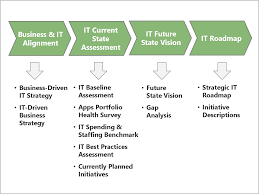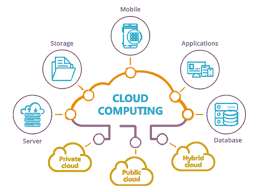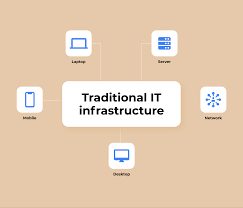Maximizing Business Potential with Advanced IT Infrastructure Services
The Importance of IT Infrastructure Services
In today’s digital age, having a robust and efficient IT infrastructure is crucial for the success of any business. IT infrastructure services play a vital role in ensuring that an organization’s technology systems are reliable, secure, and scalable.
What are IT Infrastructure Services?
IT infrastructure services encompass a wide range of activities that support the operation and management of an organization’s IT environment. These services include:
- Network management
- Server maintenance
- Data storage and backup solutions
- Cybersecurity measures
- Cloud computing services
- Software development and maintenance
The Benefits of IT Infrastructure Services
Investing in professional IT infrastructure services offers numerous benefits to businesses, including:
- Improved Efficiency: A well-maintained IT infrastructure ensures that systems run smoothly, reducing downtime and boosting productivity.
- Enhanced Security: Robust cybersecurity measures protect sensitive data from cyber threats and unauthorized access.
- Scalability: Scalable IT infrastructure allows businesses to adapt to changing needs and accommodate growth without major disruptions.
- Cost Savings: Efficient IT infrastructure services help optimize resources and reduce operational costs in the long run.
- Better Decision-Making: Access to real-time data through advanced analytics tools helps organizations make informed decisions quickly.
The Future of IT Infrastructure Services
As technology continues to evolve rapidly, the demand for advanced IT infrastructure services will only increase. Organizations that embrace innovative solutions such as cloud computing, AI-driven automation, and IoT integration will gain a competitive edge in the market.
In conclusion, investing in professional IT infrastructure services is essential for businesses looking to stay ahead in today’s digital landscape. By partnering with experienced providers, organizations can build a solid foundation for growth, efficiency, and security in the ever-changing world of technology.
Understanding IT Infrastructure Services: Definitions, Examples, and Key Components
- What do you mean by IT infrastructure services?
- What are the services of infrastructure?
- What is an example of IT infrastructure?
- What are the 7 components of IT infrastructure?
What do you mean by IT infrastructure services?
IT infrastructure services refer to a comprehensive range of activities and solutions that support the management and operation of an organization’s information technology environment. These services encompass various aspects such as network management, server maintenance, data storage, cybersecurity measures, cloud computing, and software development. Essentially, IT infrastructure services ensure that a business’s technological systems are reliable, secure, and scalable to meet its operational needs effectively. By leveraging professional IT infrastructure services, organizations can enhance efficiency, improve security, achieve scalability, reduce costs, and make informed decisions based on real-time data analytics.
What are the services of infrastructure?
Infrastructure services encompass a wide range of essential offerings that support the operation and management of an organization’s IT environment. These services typically include network management, server maintenance, data storage and backup solutions, cybersecurity measures, cloud computing services, and software development and maintenance. By providing these critical services, IT infrastructure plays a fundamental role in ensuring the reliability, security, and scalability of an organization’s technology systems.
What is an example of IT infrastructure?
An example of IT infrastructure is a company’s network system, which includes hardware components such as servers, routers, switches, and storage devices, as well as software applications and databases that enable communication and data transfer within the organization. Additionally, IT infrastructure encompasses the necessary cybersecurity measures to protect sensitive information and ensure the integrity of the network. This interconnected system forms the backbone of an organization’s technological operations, supporting day-to-day functions and facilitating efficient workflow across various departments.
What are the 7 components of IT infrastructure?
In the realm of IT infrastructure services, a frequently asked question revolves around the seven key components that form the foundation of a robust technological environment. These components include networking hardware, software applications, data storage and management systems, servers for processing and hosting data, cybersecurity measures to protect sensitive information, cloud computing services for scalability and flexibility, and IT support services to ensure smooth operations and address technical issues promptly. Understanding these essential components is crucial for organizations seeking to optimize their IT infrastructure and leverage technology effectively to drive business success.












